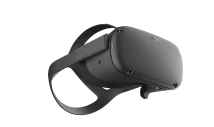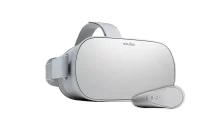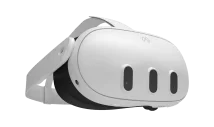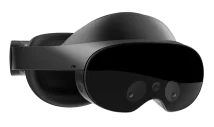For anyone new to VR, choosing the right headset can be a confusing and stressful process. With virtual reality becoming more popular, accessible and cheaper than ever before, it can be overwhelming, especially when you consider that there are now over fifty headsets you could potentially choose from. Since they all claim to offer the best ‘out of this world' experiences, it's no wonder that it's so difficult. Let me shed some light on the choices available to you, and hopefully assist you in making the right choice. Read more...
-
- Copycat headsets?
- It never ceases to amaze me how fast the eastern market catches on anytime there's a gap in the market and the potential of making money, and why not! There are now loads of copycat VR HMDs available. Don't get me wrong, some are fairly good; after all, everything's made in China, right? However, although our comparison chart is fairly extensive, we only list the popular branded headsets.
- What's your budget?
- VR headsets range vastly in price. They can sell for anywhere from £5, for a simple cardboard cut-out, to top range headsets, such as the Valve Index, costing as much as £1,000!. To be honest, most opt for something in-between, especially people that are new to VR. It’s best to start off with a mid-range headset, then work your way up.
- Dip your toe
- Dip your toe: If you're totally new to VR and fancy just giving it a go, but don't want to fork out hundreds of pounds on a headset, try to find a friend who owns one and give it a go. Just keep in mind that headsets differ in terms of portability, comfort, visual clarity and control. So don't be put off if you have a bad experience, such as nausea. This is common with cheaper headsets.
- What experiences are you looking for?
- Each headset has its own unique strengths and weaknesses. We can help you find the optimal one for your preferred gameplay style. There are currently three main types of home VR headsets. Let’s highlight their key functions and features...
- (1) Standalone headsets - Smartphones: Standalone headsets are not attached to another device, like a computer. They are simply untethered VR headsets that don't require any power. This type of headset allows you to experience VR by inserting a compatible smartphone into the front-plate of the headset. This is a cheap and easy way to experience VR. Most of these devices are easy to set-up and can accommodate smartphones with a 4 to 6 inch display. Standalone headsets aren’t compatible with all phones, so make sure you get one that works for you.
-
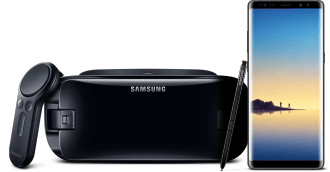
- The PROS: Great for parties, as they allow people to connect, and have fun through sharing awesome experiences together. - Cheap, very portable, light-weight and easy to set-up - No pesky wires to trip over.
The CONS: Phone battery rapidly depletes, also making the phone quite hot, leaving you hot, sweaty and feeling uncomfortable - Controllers are generally basic - Limited experiences and game titles - Software dependent - Visual quality is down to the capabilities of the smartphone.
- (2) Tethered / Untethered - Universal headset: This type of headset is quite unique. At present the only VR headset that offers both a tethered and untethered VR experiences is the Oculus Quest. The Quest is a revolutionary, universal VR headset, that gives you the freedom to experience VR without being tied (tethered) to a PC. You can upgrade to the "Quest Link" tethered option and experience even more Oculus titles, with full access to both the Oculus Home and Oculus Dashboard interfaces.
-
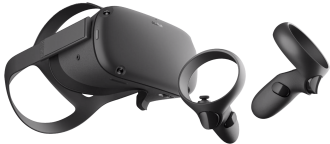
- When used as a standalone headset VR content is stored on a memory drive in the device itself. The headset comes in two versions; the standard 64GB or 128GB for the hard-core gamer. Early next year Oculus will also be introducing finger tracking to the Quest controllers at no additional cost.
- (3) Tethered: The most common type, these headsets need to be plugged into a computer. These headsets generally offer a greater immersive VR experience than the standalone type headsets. The two main drawbacks of having a headset that plugs into a PC is that the device runs its own software and is generally heavily reliant on the processing power and graphics card (GPU) within your PC. So, with that in mind it's important to remember your PC will require a fairly decent GPU, especially if you want to play the best vr games, such as Half-Life: Alyx or Asgard's Wrath.
-
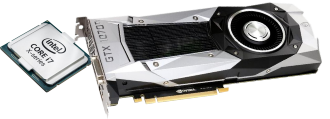
- Depending on what type of VR experience you want and whether your PC is good enough for the headset you choose, most headset manufacturers usually specify a PC’s minimum and recommended requirements. Having said that, minimum means 'minimum'. Personally I would recommend your PC spec to be at least equal or greater than the manufacturers’ recommended requirements, especially if you're thinking of purchasing a top spec headset. You can further refine your knowledge and decision by checking out our 'Best VR headset' article. Theres some excellent advice on the various makes and the benefits each of them have to offer.
- Know your VR: Get a better understanding of those technical words and acronyms that you'll come across, here and on other websites. Jargon Busters is the ideal resource for deciphering almost everything there is to know about virtual reality technologies. The more you know will increase your chance of getting the right headset for you.
-
![VR Jargon and Acronyms for virtual reality VR Jargon Busted]()
- Head over to the Jargon Busters page...
- Click here to ask a question




